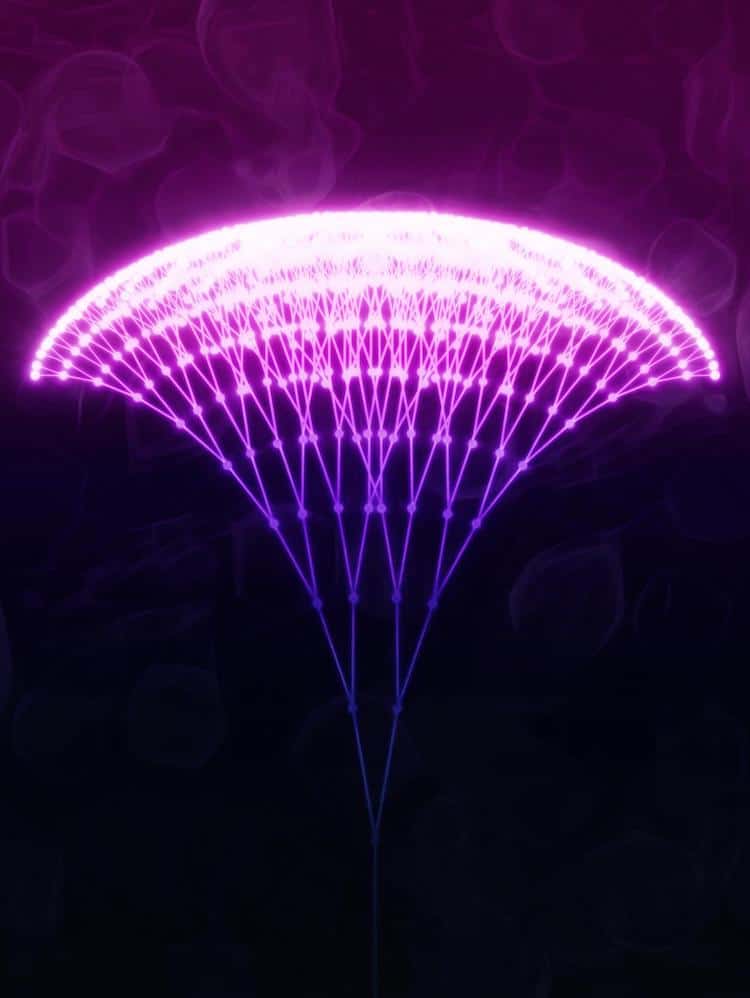
Researchers in the US, Poland and Korea have observed photon avalanching – a chain-reaction-like process in which the absorption of a single photon triggers the emission of many – in tiny crystals just 25-30 nm in diameter. This highly nonlinear phenomenon had previously only been seen in bulk materials, and team leader James Schuck says that replicating it in nanoparticles could lead to “revolutionary new applications” in imaging, sensing and light detection.
Photon avalanching involves a process known as upconversion, whereby the energy of the emitted photons is higher than the energy of the photons that triggered the avalanche. Materials based on lanthanides (chemical elements with atomic numbers between 57 and 71) can support this process in part because their internal atomic structure enables them to store energy for long periods of time. Even so, achieving photon avalanching in lanthanide (Ln) systems is difficult because high concentrations of Ln ions are needed to keep the avalanche going, and the relatively large volume of material required has previously restricted applications.
Add more lanthanide
In the latest work, Schuck and colleagues at Columbia University, together with collaborators at Lawrence Berkeley National Laboratory, the Polish Academy of Sciences and Sungkyunkwan University, observed photon avalanching in Ln nanocrystals after exciting them with a laser at near-infrared wavelengths of either 1064 or 1450 nm. The crystals are based on sodium yttrium fluoride (NaYF4) in which 8% of the yttrium ions have been replaced with thulium. This doping fraction is much higher than the 0.2-1% typically found in previous work on photon avalanching.
Schuck and colleagues found that in their best-performing devices, the intensity of the upconverted emission from their doped nanocrystals scales with the 26th power of the intensity of the exciting lasers – meaning that a 10% change in incident light produces more than a 1000% change in emitted light. This extreme nonlinearity far exceeds previously reported responses for Ln crystals and is not possible in other nonlinear optical materials.
And that’s not all. Co-team leader Arthur Bednarkiewicz tells Physics World that an effect that occurs due to a phenomenon called concentration quenching, and that is usually detrimental in upconverting lanthanide-based luminescent materials, appears in this material as a positive chain reaction, similar to optical gain. It thus enables photon avalanching.
Unprecedented nonlinear response
According to the researchers, the unprecedented nonlinear response they observed means that avalanching nanoparticles might be used to create an optical imaging system with a resolution of just 70 nm. This would be well below the diffraction limit, which dictates that features smaller than about half the wavelength of the illuminating light cannot be resolved.
“In such an application, the particles would effectively be employed as luminescent probes and the technique could work using a simple scanning confocal microscope,” says Changhwan Lee, the study’s lead author and a member of Schuck’s group.
Bednarkiewicz adds that the “perfect photostability” of the photon avalanching nanoparticles gives them an advantage over alternative probe particles such as organic dyes or fluorescent proteins. Whereas the fluorescence from these other materials tends to fade away under prolonged illumination, Bednarkiewicz says that emissions from the nanoparticles “can last almost infinitely and may enable long-term sub-diffraction observations.”
The nanoparticles do have some drawbacks. At 25 nm in diameter, they are larger than the 3-mm organic fluorophores routinely employed in biological sensing applications. Their surface also needs to be functionalized (that is, it needs to have certain chemical groups incorporated to promote desired reactions) before they can sense specific biological molecules. A further drawback is that the nanoparticles emit just a single colour of light, and the avalanching process has a relatively long onset time (from tens to hundreds of milliseconds). However, Schuck and colleagues say that – as with any new technology – further optimization is possible, and some of these drawbacks may be overcome in later work.

Upconverting nanoparticles allow mice to see in infrared
For now, the researchers are focusing on ways to use the nonlinear behaviour they have observed for biological and environmental sensing – for example, to detect pathogens such as viruses, bacteria, and fungi in biological fluids, blood or tissue. Other possible uses might include sensing changes in temperature, pressure and humidity.
Bednarkiewicz adds that the photon avalanching nanoparticles may also find applications more broadly, in areas ranging from mid infrared photon detection and nanolasers to optical neuromorphic computing and optogenetics. “Our present and past studies will certainly be of interest to the scientific luminescence community since they redefine the fundamental concepts and requirements for achieving photon avalanching at the nanoscale,” he says.
The research is detailed in Nature.
